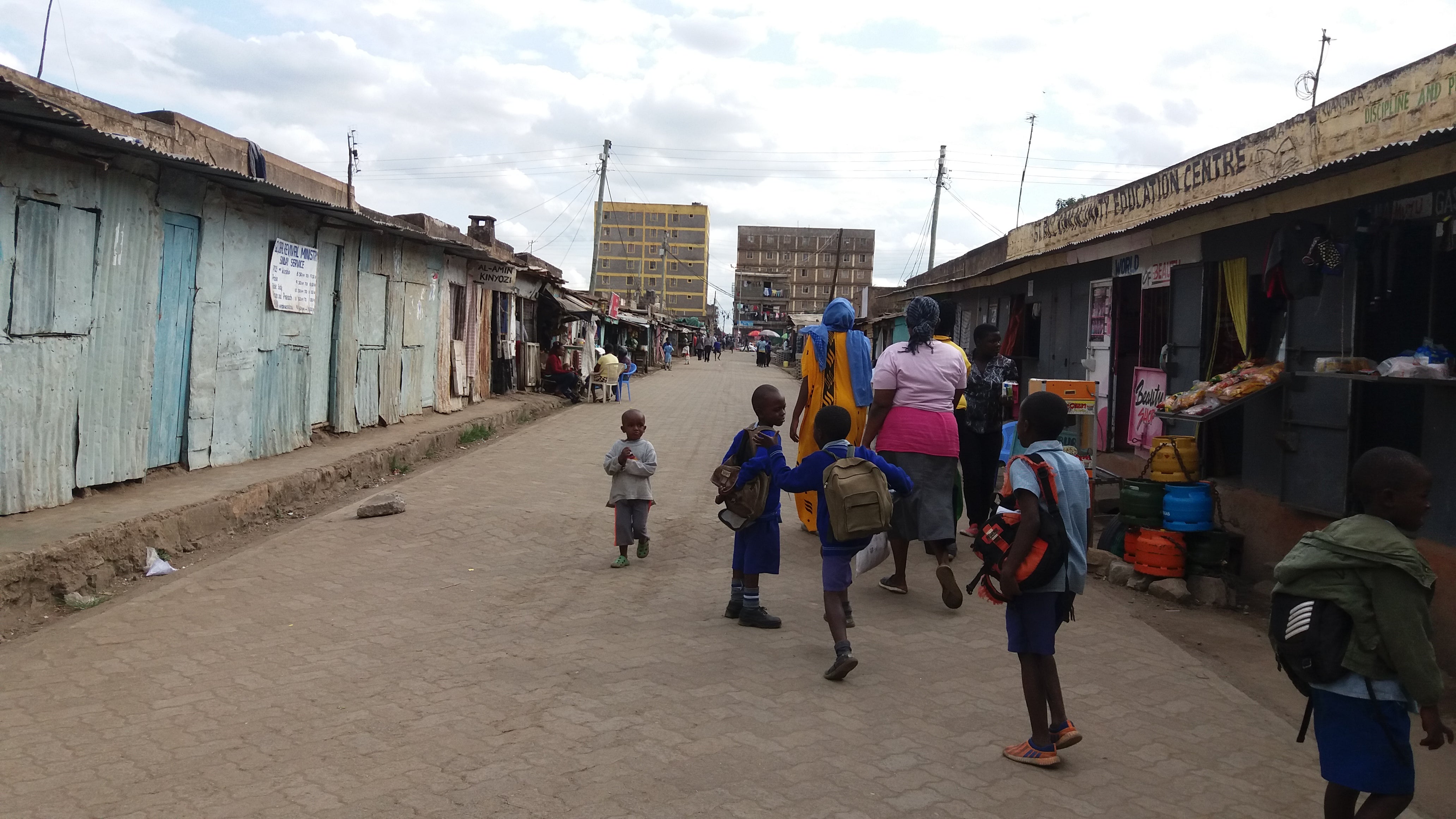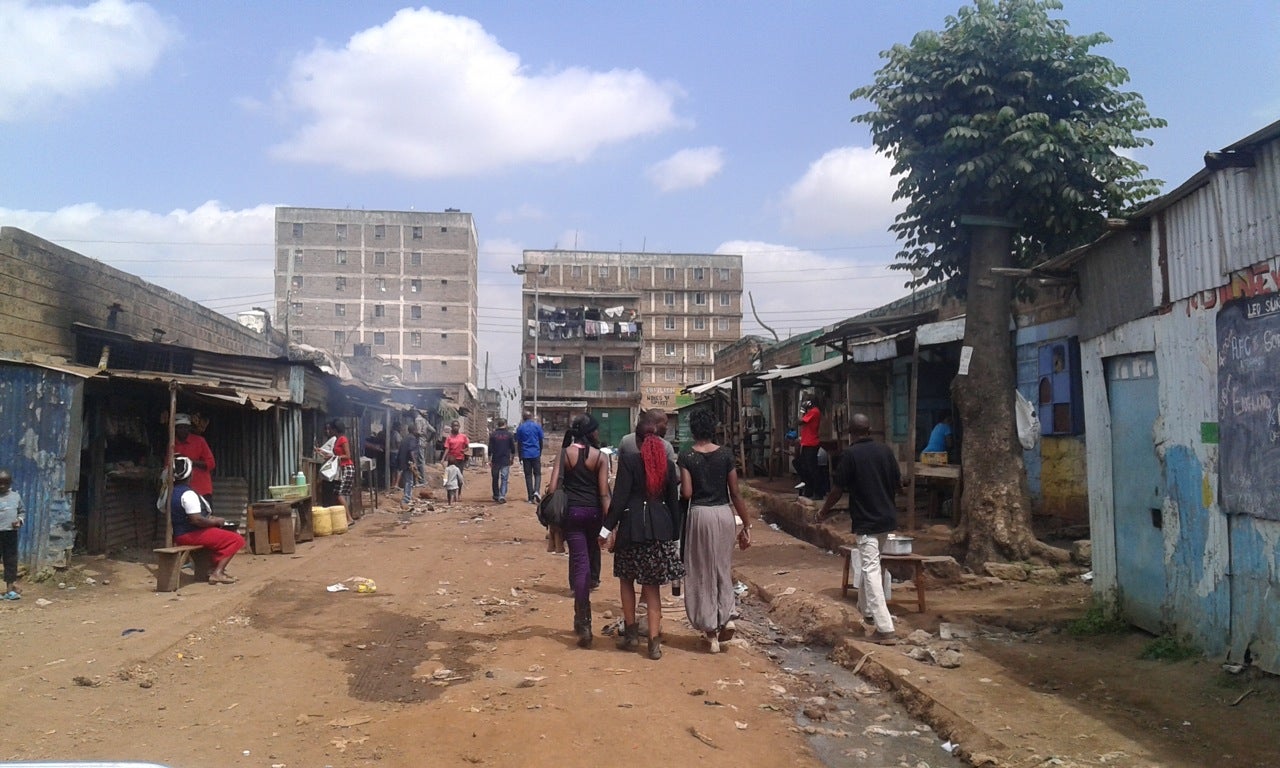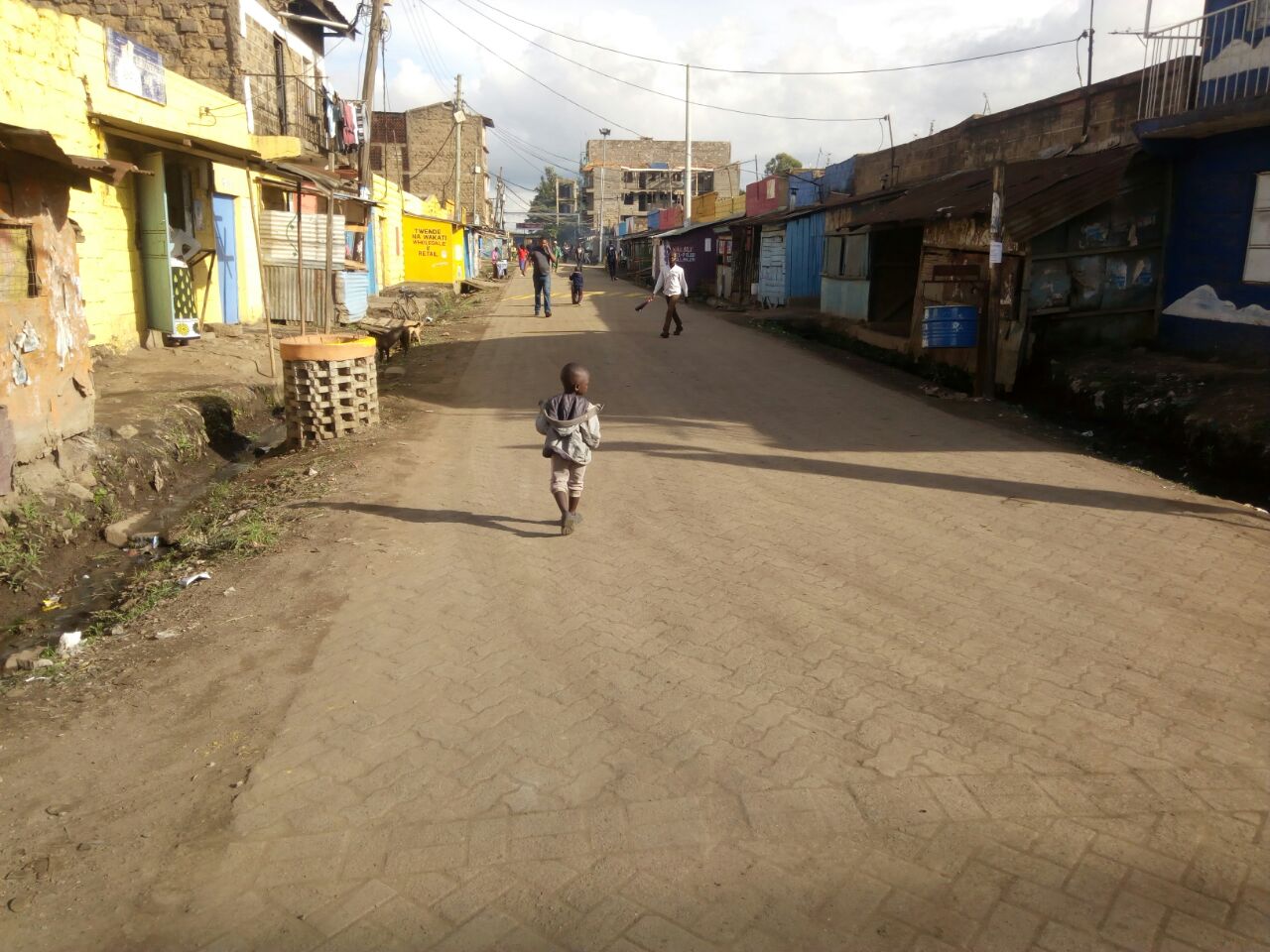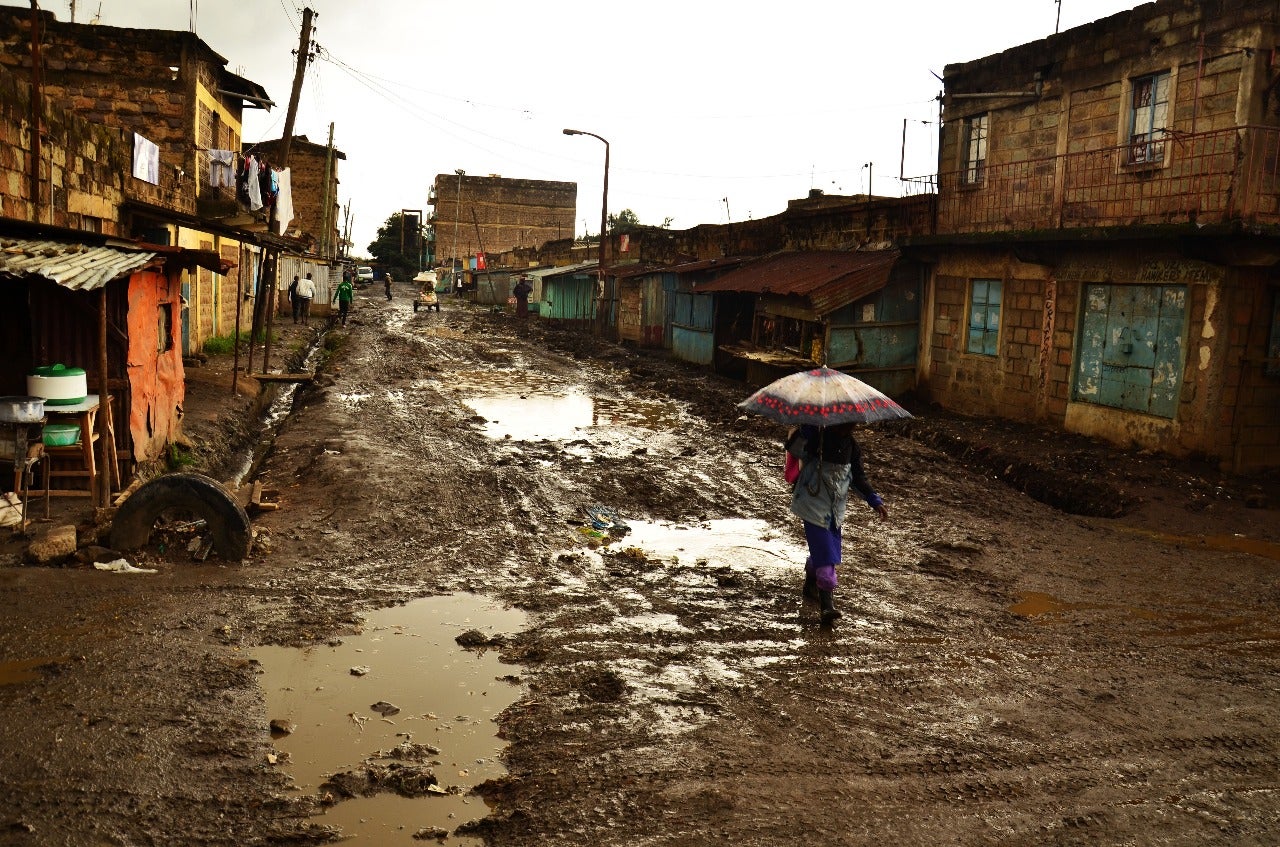Nairobi, 7 October 2019--For many, the suburb of Dandora in Nairobi’s Eastlands, is associated with crime, waste and garbage. Despite being part of a planned neighborhood with existing public spaces, it is also home to one of the city’s largest waste dump sites. Coupled with residential streets that are neglected and have almost zero waste management services, it’s gained a reputation as a smelly, dirty area.
For the 140,000 or so residents living there, however, it’s their home and, thanks to a recent collaboration between local residents and youth groups, UN-Habitat, Making Cities Together Coalition and the Dandora Transformation League; residents are transforming Dandora’s garbage filled community spaces to places that are waste free, attractive and engaging. In some streets, instead of people complaining about “waste”, people are now saying ‘’wow” because of the clean, vibrant environment they find.
The Dandora model street partnership project started at the domestic level public spaces, focusing on improving the shared courtyard spaces of residential compounds which were often dirty and full of garbage. These courtyards are within courts/streets that are home to between 20-50 households and are a central public space for all families and individuals living there. Through an annual competition (Changing Faces Challenge), residents, led mostly by the youth, have cleaned up these courtyards clearing them of old litter, discarded pieces of furniture and other items. Once neighbors saw the end result, they joined the project and also cleaned up their courtyards.


The initial courtyard clean up phase of the project, has had a catalytic impact within Dandora. Not wanting to stop at their doors-steps, residents have gone on to form street-wide coalitions to upgrade their local street - clearing drains, planting trees, paving roads, constructing attractive neighbourhood waste bins. The local member of parliament even got involved seeing the value of the resident-driven project for improving his local constituency. The Model street was also named Badilisha street, loosely translated as ‘’change street’ in English, and four street gateways have been erected reflecting community pride and giving prominence to the new waste-free streets.
Throughout the entire process, UN-Habitat has supported residents to strengthen local multisector partnerships and provided ideas to create mindset change, encouraging residents to ‘think big’ and ‘at scale’. As one local champion, Charles Gachanga, C.E.O, Dandora Transformation League, said “if we can change Dandora, we can change Nairobi, we can change Kenya and we can change Africa”.
The project provides a positive and practical example about the value of inclusive urban planning using public space and waste management as entry points to address neighborhood revitalization. It underscores the value of starting at the micro scale to build confidence in alternative approaches. It also shows how inclusive approaches that focus on collective spaces (public space) and diverse stakeholders, can be upscaled and replicated in other areas.
So what were the key contributing factors that saw not only individuals transforming their own homes into waste free spaces, but their street and ultimately, their communities?
Six elements have been key to the success of improving the waste management, multi-sector and stakeholder engagement and attractiveness of Dandora:
- Genuine multi sector partnerships: The project incorporated all key stakeholders: residents, local authorities, the private sector, civil society and UN-Habitat. It also focused on incorporating different demographic groups throughout the project including women, youth and children through ’building parties’. The involvement of private sector partners was vital and UN-Habitat alongside the Making Cities Together partners, were able to broker the engagement of a local paint company, Jotun as well as to interest the main utility company, Kenya Power. UN-Habitat’s continued support to link key players into the project while at the same time, keep it very much directed and owned by the community, was critical. The multi sector partnership supported the financing and helped stakeholders learn new skills around establishing such coalitions.
- Multi sector approach: While waste management in courts was the main focus of the project, it became a catalyst and opportunity to discuss and address other key and related issues around community trust and safety which were related issues being compounded by the poor waste management in Dandora. The cleanup and waste management focus also led to an increased sense of pride of place, improved safety as more people felt comfortable on the street, livelihood generation activities improved as vendors felt safer and more comfortable to be in the clean space.
- Community in the driving seat: The community not only directed the project but made substantial in-kind contributions such that residents now contribute a small levy to keep the youth employed to maintain the clean streetscape. The local government (Nairobi City County Government) has now recruited all the youth who were part of the transformation to help sustain and scale-up the initiative at the city level. Nairobi County Government has also committed to repair/service public lighting and assist in the reclamation of public spaces that have been illegally misappropriated and or encroached on.
- Practical urban plan incorporating different scales: Starting at the domestic scale focusing on courtyard improvement, the project then moved to the street level, to the neighbourhood level and to the wider city level. The project started small, to develop a ground swell of interest and partnerships and also to promote mind set change about the value of cleaning up your own environment rather than waiting for others to do it. Careful attention to a scaled plan, also enabled stakeholders to envision impacts beyond the home space to their broader neighbourhood.
- Mechanisms to ensure an ongoing community focus to waste and public space management: To this day, locals manage the community spaces, ensuring the effort to remain waste wise is adhered to. The local youth have come up with schemes and entrepreneurial ideas for example, about renting spaces for weddings, meetings and adding play facilities, some of which they now charge to make money for sustainability.
- Value for money. The project was able to galvanize the support and in-kind contributions from all sectors of the community such that the overall cost of upgrading the model street in Dandora was around USD$100,000. All sectors made a contribution – public, private and community. In fact, the community itself continues to provide in kind support through managing the ongoing waste management of the streets, caring for the trees, maintaining clean streets and keeping an eye on vandalism. Additionally, the community is making voluntary contributions of Ksh. 30 per month to support the youth who are collecting garbage and providing security at night.


The conversion of Dandora’s courtyards and streets into attractive, safe and vibrant spaces is now being noted by people living in other neighbourhoods in Nairobi, including Kayole, Korogocho, Buruburu and Mathare among others. It has been replicated at the city level using the same ‘Changing Faces’ competition model that takes place annually and brings together community champions and urban enthusiasts from all over Nairobi.
